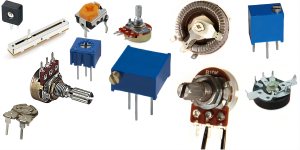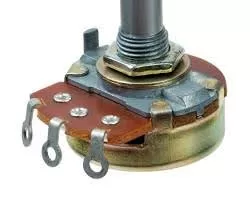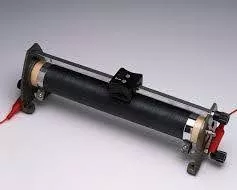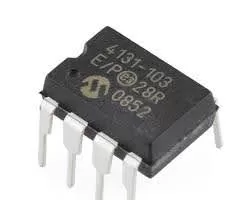
Demystifying Variable Resistors: Types, Applications and Rheostats vs Potentiometers
November 07 2023 
Inquiry
Global electronic component supplier AMPHEO PTY LTD: Rich inventory for one-stop shopping. Inquire easily, and receive fast, customized solutions and quotes.
QUICK RFQ
ADD TO RFQ LIST
In electronic circuits, variable resistors—also referred to as potentiometers and rheostats—are crucial parts. They make it possible to modify resistance, giving you control over voltage and current levels. In this blog, we will explore the functionality, applications, and types of variable resistors, as well as the differences between potentiometers and rheostats. Additionally, we will discuss load resistors and their purpose in circuitry.
What is a Variable Resistor?
A variable resistor is an electronic component that can change its resistance value. They are also referred to as rheostats or potentiometers. Reactive elements and wiper contacts combine to form variable resistors. Metal film, wire wound, carbon, and other materials can all be used to create the resistive element. Movable along the resistive element, the wiper contact is one of the contacts.
What are the three common types of Variable Resistors?
The three most common types of variable resistors are potentiometers, rheostats, and digital potentiometers.
- Rheostats

- Digital Potentiometers

Video related to Variable Resistors
What Does a Variable Resistor Do?
A variable resistor, also known as a potentiometer or rheostat, is an electronic component that allows for the adjustment of resistance in an electrical circuit. Unlike fixed resistors, which have a predetermined resistance value, a variable resistor can be manually or electronically adjusted to change its resistance. A variable resistor's main purpose is to regulate the resistance to control the amount of electric current that flows through a circuit. The variable resistor controls how much current flows through it by varying its resistance. Due to this feature, it can be used for a variety of tasks, such as adjusting motor speed, dimming lights, and controlling audio device volume. Typically, variable resistors are made up of a movable contact that can be used to modify the resistive element's effective length. The resistance that the current passing through the circuit encounters is changed by this adjustment.How Does a Variable Resistor Work?
- There are three terminals on the variable resistor: a wiper terminal, two end terminals, and a third.
- The two end terminals are connected to the resistive element.
- A slide-along contact attached to the wiper terminal is situated along the resistive element.
- The resistance between the wiper terminal and the resistive element's end terminal is zero when the wiper contact is slid to that end.
- The resistance between the wiper terminal and that end terminal, when the wiper contact is slid to the other end of the resistive element, equals the resistive element's total resistance.
- By sliding the wiper contact along the resistive element, the resistance between the wiper terminal and the end terminals can be adjusted to any value between zero and the total resistance of the resistive element.
Where Are Variable Resistors Used?
- Audio Devices: For volume control, variable resistors are frequently used in audio devices. They let users change the resistance and, in turn, the speaker or headphones' volume level.
- Lighting Control: Dimmer switches employ variable resistors to regulate the brightness of the lights. The amount of current passing through the circuit can be changed by varying the resistance, which will cause the lights to brighten or dim.
- Motor Speed Control: To change a motor's speed, a motor control circuit uses variable resistors. The motor's speed can be adjusted by varying the resistance, which also controls the motor's current supply.
- Temperature Control: Circuits for controlling temperature, like those in ovens and thermostats, employ variable resistors. The amount of current passing through heating elements can be controlled by varying the resistance, which in turn controls the temperature.
- Voltage Regulation: In voltage divider circuits, variable resistors—especially potentiometers—are used to set reference voltages or modify the circuit's output voltage. They are frequently employed for calibration or fine-tuning in electronic circuits.
- Test and Measurement Equipment: Multimeters and signal generators are examples of test and measurement equipment that use variable resistors for calibration and adjustment. They make it possible to precisely control resistance values when doing measurements and testing.
- Electronic Instrumentation: To fine-tune and adjust signal levels, variable resistors are used in a variety of electronic instruments, including oscilloscopes and audio mixers. They aid in the accomplishment of precise measurements and ideal signal processing.
- Circuit Prototyping and Experimentation: To allow for flexibility in adjusting resistance values during the development and testing of electronic circuits, variable resistors are frequently used in these processes.
Variable Resistor Examples
- Trimmer Potentiometer: Often referred to as trim pots, trimmer potentiometers are tiny variable resistors that are used in calibration or fine-tuning processes. They are frequently seen on circuit boards and electronic equipment because they make it possible to precisely adjust resistance values during production or maintenance.
- Rotary Potentiometer: Adjustable variable resistors with a revolving dial or knob are known as rotary potentiometers. They frequently adjust settings like tone, balance, and gain in audio equipment like mixers and equalizers.
- Slide Potentiometer: Often referred to as faders, slide potentiometers are adjustable via a linear sliding mechanism. They are widely used to modify levels or fade effects in lighting control systems, DJ equipment, and audio mixing consoles.
- Thermistor: A thermistor is a kind of variable resistor in which temperature affects how much resistance it has. Applications for temperature sensing and control, including environmental monitoring systems, thermostats, and temperature probes, use it.
- Light-Dependent Resistor (LDR): Also referred to as a photoresistor, an LDR is a variable resistor whose resistance varies according to the amount of light that strikes it. It is frequently utilized in light-sensitive applications like light meters, camera exposure control, and automated streetlights.
What is the Difference Between a Potentiometer and a Rheostat?
| Characteristic | Potentiometer | Rheostat |
| Number of terminals | 3 | 2 |
| Typical use | Voltage control | Current control |
| Common applications | Audio and video equipment | Power electronics applications |
What are Rheostats?
A rheostat is a variable resistor that has two terminals. It's employed in circuits to regulate current flow. High-power applications like lighting control and motor control are common uses for reelectro thermostats.What is a Potentiometer?
A potentiometer is a three-terminal variable resistor. It is applied to divide a signal of voltage. Potentometers are mostly found in low-power devices like voltage dividers and audio equipment.How Does a Rheostat Work?
A rheostat regulates a circuit's resistance to function. There is a lot of resistance in the circuit and little current flow when the rheostat is set to its lowest setting. The circuit has low resistance and high current flow when the rheostat is set to its highest setting.How Does a Potentiometer Work?
A potentiometer works by changing the amount of voltage that is dropped across it. The signal's total voltage is dropped across the potentiometer when it is set to its lowest value. There is no voltage drop across the potentiometer when it is set to its maximum value.Where Are Rheostats Used?
Rheostats are used in a variety of applications, including:- Motor control circuits: Rheostats are used to regulate motor speed.
- Lighting control circuits: Rheostats are used to regulate light intensity.
- Dimmers: To dim lights, rheostats are employed.
- Battery chargers: Rheostats are used in battery chargers to regulate the rate at which batteries charge.
- Test equipment: Circuits and component testing is done with rheostats.
What is a Potentiometer Used For?
Potentiometers are used in a variety of applications, including:- Audio equipment: Potentiometers are used in audio equipment to regulate volume.
- Voltage dividers: Circuits that lower a signal's voltage are called voltage dividers, and they are made with potentiometers.
- Sensors: Potentiometers are used to make sensors, including position and pressure sensors.
- Remote controls: Potentiometers are employed in the construction of remote controls.
- Joysticks: Joysticks are made of potentiometers.
Why Is a Variable Resistor Used in a Circuit?
- To modify the voltage or current in a circuit, variable resistors can be employed to regulate the circuit's voltage or current. This can be used for many different things, like adjusting a light bulb's brightness or an audio amplifier's volume.
- To determine a circuit's operating point: The point at which a circuit functions most effectively is known as its operating point. To make sure a circuit is running as efficiently as possible, variable resistors can be used to change the operating point of the circuit.
- To make up for component variations: Variations in component values are tiny shifts that can happen because of manufacturing tolerances and external circumstances. Variable resistors can be used to make up for differences in component quality and guarantee the proper operation of a circuit.
- To establish a feedback loop: A circuit's behavior can be controlled by feedback loops. By constructing feedback loops with variable resistors, circuits can self-regulate and sustain a desired state.
Conclusion
In electronic circuits, variable resistors are essential because they provide accurate control over resistance and current flow. Two popular varieties of variable resistors, each with specific uses, are potentiometers and rheostats. Furthermore, load resistors have a specific function in circuitry that guarantees safety and correct operation. You can improve your understanding of electronic components and their function in different systems by learning about the functions and applications of variable resistors. What is a Variable ResistorWhat are the three common Types of Variable ResistorsVideo related to Variable ResistorsWhat Does a Variable Resistor DoHow Does a Variable Resistor WorkWhere Are Variable Resistors UsedVariable Resistor ExamplesWhat is the Difference Between a Potentiometer and a RheostatWhat are RheostatsWhat is a PotentiometerHow Does a Rheostat WorkHow Does a Potentiometer WorkWhere Are Rheostats UsedWhat is a Potentiometer Used ForWhy Is a Variable Resistor Used in a CircuitConclusion
Related Articles
- ·Stratix 10 VS Stratix V: Which FPGA is Right for Your Next Project?
- ·Intel Xeon Platinum 8454H vs AMD EPYC: Which Reigns Supreme?
- ·A Deep Dive into the AMD EPYC 4564P Processor
- ·MSP430F5438A vs MSP430F5529: A Detailed Analysis of Their Capabilities
- ·Comparing MSP430F6659 and MSP430F5419A: Which One is Right for Your Project?
- ·Exploring the Features of MSP430F5529 and MSP430F5638 Microcontrollers
- ·Demystifying 20 Microcontroller Projects for Beginners
- ·Unveiling the Ultimate Guide to Microcontroller Programming
- ·4680 Battery: Unveiling the Power Potential of the Next-Gen Cell
- ·Exploring the Case Studies on Arduino Applications
Populer Posts
